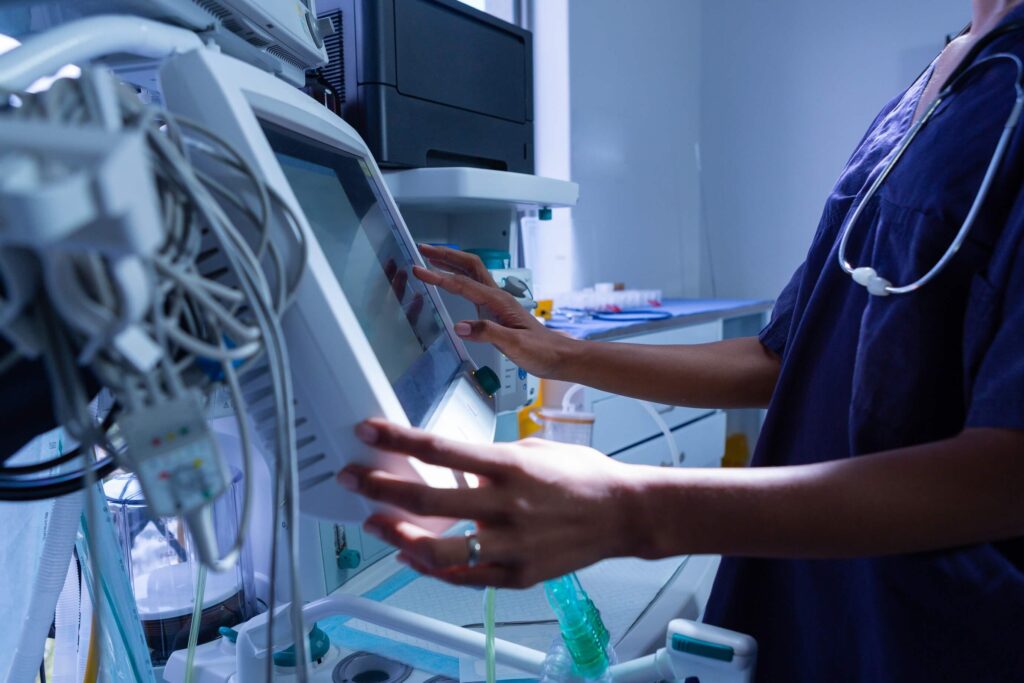MDD to MDR transition process step by step – 2025 update
Due to the introduction of the MDR regulation, all medical device manufacturers certified with a CE mark according to the Medical Device Directive (MDD directive) had to undergo the MDD to MDR transition process to continue to sell their products on the EU market.
Even with the application deadline behind us, many medical device manufacturers are still finalising their MDR compliance. This article outlines the key steps to complete your MDD to MDR transition smoothly – helping you address remaining gaps, avoid delays, and stay compliant with EU MDR requirements through to final certification.
Why the MDD to MDR transition is still relevant
Although the MDR application deadline passed in May 2024, many device manufacturers are still in the process of finalising their MDR certification. That’s because extended transition periods remain in play. These run to 31 December 2027 for Class III and Class IIb implantable medical devices, and to 31 December 2028 for other eligible devices – provided that an MDR application was submitted on time, a valid MDD certificate was in place as of May 2021, and a compliant quality management system (QMS) has been implemented.
Several factors are contributing to the continued transition from the MDD to the MDR in 2025. These include Notified Body backlogs, technical documentation gaps identified during conformity assessments, internal team or IT system changes, and the need to onboard new devices following acquisitions. So, MDR compliance remains a pressing and active priority for medical device manufacturers. The steps below cover critical areas to reassess and improve – especially if you’re dealing with regulatory audits, documentation updates, or portfolio changes.
Be mindful of any changes to your medical devices
This remains critical even after submitting your MDR application. Any changes now could risk your eligibility for the extended MDR transition period and lead to delays in certification.
The CE certificate is valid as long as you don’t make any significant changes to the device. Any modification must be assessed in terms of safety and performance, and checked to ensure the intended use remains the same. If a change impacts the device’s risk classification or intended purpose, a new conformity assessment under the MDR regulation may be required.
Apply to the changed Post-Market Surveillance (PMS) requirements
As your organisation prepares for the final MDR certification, you must fully implement the updated post-market surveillance requirements, even if your existing certification remains under the MDD.
Monitor new guidance under EU MDR and adapt
With new Medical Device Coordination Group (MDCG) guidance regularly issued to clarify aspects of the EU Medical Device Regulation, you should stay up to date to ensure your QMS, technical documentation, and compliance procedures remain audit-ready. The expert guidance is available on the MDCG’s website.
Get expert help with the MDD to MDR transition
See our offerRevisit your MDR action plan to address any gaps
With the application deadline behind you, now is the time to revisit your MDR transition plan and address gaps highlighted during audits or Notified Body reviews. Stay flexible and responsive to reduce delays and ensure ongoing access to the EU market.
What is the MDD to MDR transition process?
If you’re still finalising your MDR certification in 2025 – or onboarding newly acquired product lines – these are the key steps to reassess or complete as part of your compliance journey.
We’ve prepared a step-by-step MDD to MDR transition checklist that you can follow. The steps don’t have to be completed in this exact order – depending on your business case, the sequence may vary.
Step #1 Verify your product’s classification
Start by confirming whether your product qualifies as a medical device under the MDR. The EU MDR has a broader definition of a medical device than the MDD. For instance, software was not considered a medical device before.
The MDR introduced new, more rigid classification rules that particularly impact manufacturers of active implantable medical devices, surgical tools, and software. The most significant change affected medical devices that were classified as Class I under the MDD. Now, many of these fall under Class IIa or higher. The higher the risk class, the stricter the conformity assessment requirements.
Step #2 Update the technical documentation and labelling
Once you’ve verified your device’s MDR classification, review and update your labelling accordingly. The MDR requires medical devices to carry an MD symbol in a square frame. You must also revise barcodes to meet the Unique Device Identification (UDI) requirements (see step #3).
Importers of medical devices must ensure the label includes contact details and the identification of their authorised representative in the EU.
Step #3 Make sure your medical device meets the UDI requirements
Your device must be assigned three UDI identifiers:
- Basic UDI-DI – used in EUDAMED, on the Declaration of Conformity and in documentation describing the category of products.
- UDI-DI and UDI-PI – used to differentiate model variants or software versions, production batches, dates, etc.
Both UDI-DI and UDI-PI are encoded in the product barcode. Manufacturers must have a documented UDI assignment and grouping strategy. Once EUDAMED becomes fully operational, all UDIs will need to be uploaded to the database.
UDI traceability is essential in case of adverse events, field safety corrective actions, or product withdrawals.
Looking for a partner in healthcare projects?
See how we can help youStep #4 Choose and engage with a Notified Body
Only Class I medical devices (non-sterile, non-surgical and without a measuring function) can avoid Notified Body involvement. For all others – Class IIa, IIb, III and some Class I devices – you’ll need to choose a Notified Body and begin the conformity assessment process. Long waiting times and capacity limitations persist, so it’s crucial to engage early. You’ll need to define the intended purpose, device classification, and regulatory pathway before starting.
Step #5 Ensure you’re meeting all the obligations of a medical device manufacturer
This step can happen in parallel to other transition work – the earlier you begin, the more time you’ll have to adapt your processes.
Key MDR requirements for manufacturers include:
- Assigning a Person Responsible for Regulatory Compliance (PRRC).
- Registering your organisation in EUDAMED.
- Designating an authorised representative (if you’re based outside the EU or in a third country like the UK or Switzerland).
Step #6 Undergo conformity assessment and get certified
Your Notified Body will conduct both a readiness audit and a full MDR compliance audit. Although your device may have been on the market for years, the MDR treats certification as a new market entry.
Once your device has passed the audits, you’ll be able to sign the Declaration of Conformity, stating that it meets the requirements of the EU Medical Device Regulation. The date of signing also marks your official MDR market entry.
Step #7 Maintain continuous MDR compliance
Continuous MDR compliance is a long-term commitment. You must maintain up-to-date documentation, follow post-market surveillance requirements, and stay ready for follow-up audits or Notified Body interactions.
What is the timeline for the MDD to MDR transition?
The original CE certificates issued under the MDD are no longer sufficient for market access. All devices must now be certified under the EU MDR, but your conformity assessment process may extend until 2027 or 2028, depending on the device classification and submission timeline.
Still navigating the MDD to MDR transition?
Our consultants have extensive experience in the medical device industry and MDR regulation.
Whether you’re managing late-stage remediation, new product portfolio alignment, or addressing Notified Body findings, our team can support you every step of the way.
See our offer, get in touch, and book a no-obligation meeting with one of our MDR experts.
FAQ
MDR (Medical Device Regulation), which became fully applicable in May 2021, introduced stricter requirements compared to the previous MDD (Medical Device Directive). It placed greater emphasis on clinical evaluation, post-market surveillance, traceability, and detailed technical documentation.
Key steps included:
• Reviewing the product portfolio for MDR applicability.
• Performing a gap analysis between MDD and MDR.
• Updating technical documentation and clinical evaluations
• Ensuring UDI (Unique Device Identification) compliance.
• Adhering to updated classification rules.
• Submitting the device to a Notified Body for MDR certification.
A gap analysis helped manufacturers identify discrepancies between their existing MDD documentation and the requirements under MDR. It served as a roadmap for aligning technical files, processes, and risk documentation.
Notified Bodies are EU-authorised organisations responsible for assessing whether a medical device meets MDR standards. They perform conformity assessments, issue CE certificates under MDR, and remain involved throughout the product lifecycle.
No — many companies are still actively finalising MDR compliance, especially for complex Class IIb and III devices. While the application deadline (26 May 2024) has passed, actual certification may extend until 2027 or 2028.
Organisations facing resource constraints, IT provider changes, or Notified Body feedback can still benefit from expert guidance, regulatory consultants, or technology partners to avoid delays and ensure full compliance.
Manufacturers that met the application and QMS requirements by the May 2024 deadline must now:
• Work closely with their Notified Bodies to finalise MDR certification,
• Maintain updated technical files and surveillance processes.
• Ensure no significant changes are made to their devices that could void their transitional eligibility.
• Stay informed on evolving regulatory guidance and expectations.
The extended MDR transition deadlines are:
• Until 31 December 2027 for Class III and Class IIb implantable devices.
• Until 31 December 2028 for other Class IIb, Class IIa, and eligible Class I devices.
These extensions are only valid if the manufacturer had:
• A valid MDD certificate as of 26 May 2021.
• Submitted an MDR application by 26 May 2024.
• Implemented a compliant QMS.
• Avoided significant design or intended use changes.
Medical device classification in the EU is risk-based:
• Class III devices are high-risk and include products like pacemakers, heart valves, and implantable defibrillators. These devices are typically life-sustaining or life-supporting and require extensive clinical evidence.
• Class IIb devices are medium- to high-risk and include products like long-term surgically invasive tools, ventilators, and infusion pumps. These also require rigorous Notified Body review and clinical data under MDR.
About the author
RECOMMENDED ARTICLES
Contact us




